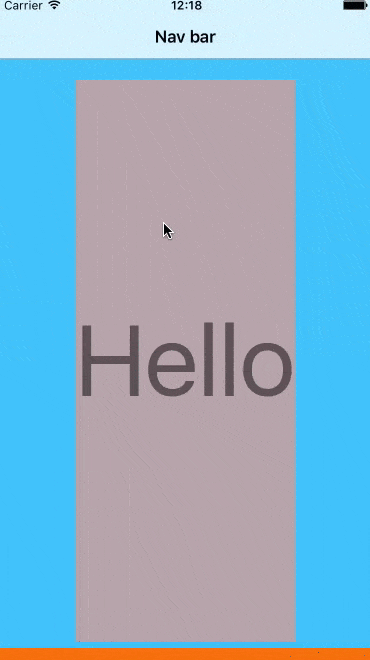这是我的演示项目。
我有两个视图控制器。主要的一个隐藏了状态栏,而第二个没有。
我创建了一个自定义驱动转换动画,从控制器一到控制器二。
当我在子视图控制器(橙色的那个)上时,我通过从顶部向底部滑动开始驱动转换。您可以看到,在拖动时状态栏会回来。并且
我取消了过渡。然后我再次开始它,你可以看到状态栏也回来了,但这一次,我的按钮没有移动,它停留在同一位置,就好像状态栏仍然被隐藏着一样。
有任何想法为什么至少取消一次转换后它会这样表现吗?
(我甚至没有谈论关于动画的奇怪事情,当取消时它会加倍(也许是模拟器的错误,因为它不会在我的 iPhone 6 9.1 和我的 iPhone 5 8.4 上执行)。
我有两个视图控制器。主要的一个隐藏了状态栏,而第二个没有。
我创建了一个自定义驱动转换动画,从控制器一到控制器二。
当我在子视图控制器(橙色的那个)上时,我通过从顶部向底部滑动开始驱动转换。您可以看到,在拖动时状态栏会回来。并且
UIButton“Hello”也在移动。我取消了过渡。然后我再次开始它,你可以看到状态栏也回来了,但这一次,我的按钮没有移动,它停留在同一位置,就好像状态栏仍然被隐藏着一样。
有任何想法为什么至少取消一次转换后它会这样表现吗?
(我甚至没有谈论关于动画的奇怪事情,当取消时它会加倍(也许是模拟器的错误,因为它不会在我的 iPhone 6 9.1 和我的 iPhone 5 8.4 上执行)。
